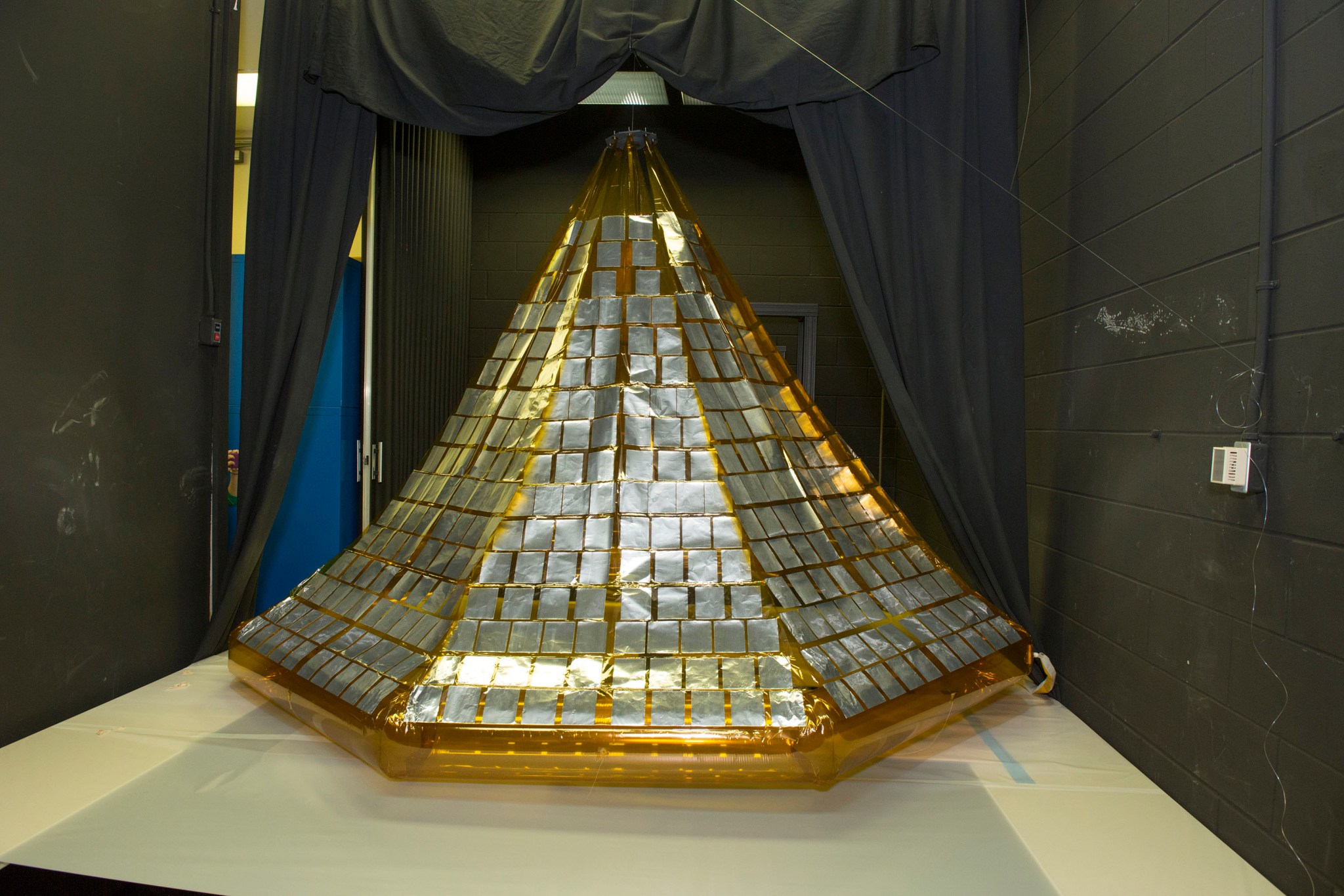Space is about power – the energy to leave Earth and soar to new places. From rockets carrying humans, to small, inexpensive satellites, to robotic explorers – all need power to achieve mission success. But often, power sources are large, costly and difficult to maintain.
NASA engineers, working with industry partners, recently built and tested a large, inflatable solar array with the potential to provide affordable, lightweight power for both large and small spacecraft. This technology could be combined with others such as advanced solar electric propulsion to enable deep space exploration missions.
“We’ve analyzed hundreds of space vehicle concepts, and it is obvious that almost all spacecraft would benefit from lighter, more affordable power sources,” said Les Johnson, the technical assistant for the Advanced Concepts Office at NASA’s Marshall Space Flight Center in Huntsville, Ala. “We’re developing a lightweight solar array that inflates once a craft is launched.”
Marshall worked with two Huntsville companies, Jacobs Engineering and ManTech International, on the test article design and fabrication. The sample solar array was mounted on an inflatable structure, packaged into a small volume similar to what might be experienced on a small spacecraft, and then deployed. Engineers measured the energy production of solar cells before and after deployment in Marshall’s labs. Folding and deployment did not damage the cells and performance remained constant.
The test article could have provided 1 kilowatt average power to a spacecraft in Earth orbit and was packaged into a volume that would only allow a few tens of watts to be provided by a conventional space solar array system. This is roughly one-third of the power provided to the Hubble Space Telescope by its much larger solar arrays. The typical U.S. home consumes about 1.3 kilowatts of power on average throughout the day.
“This system packed a lot of power in a small structure,” said Karen Cunningham, an engineer in the Marshall Center’s Space Systems Department, where testing was completed. “There’s a new emphasis on small satellites and spacecraft, which only increases the demand for lighter weight, more efficient power systems.”
The Advanced Concepts Office examined three classes of missions and determined that each would benefit from an inflatable solar array power source: (1) Earth orbiting small spacecraft, (2) a three-unit cubesat mission, and (3) a larger probe designed to fly to the outer planets.
“Our studies showed that thin film, printable yet flexible solar arrays paired with inflatable structures can change our thinking about space power systems,” Johnson said.
The system could be scaled up for larger satellite missions and down for smaller cubesat missions. Engineers designed the system with no pointing mechanisms and few other parts that could break in orbit. Features included thin photovoltaics/diodes for the solar arrays, a deployment mechanism, and an inflatable structure.
Testing the system validated it worked in a laboratory environment, which is considered a test readiness level of four, and proved the feasibility of the concept. The team’s next step is to advance the technology to provide the most power in the most efficient packaging possible for a variety of Earth and space-based uses and eventually to build a prototype suitable for flight testing. The Marshall Center funded the project through the center’s technology investment program.





























